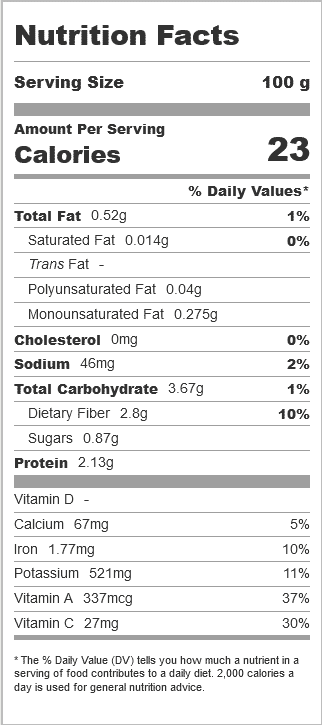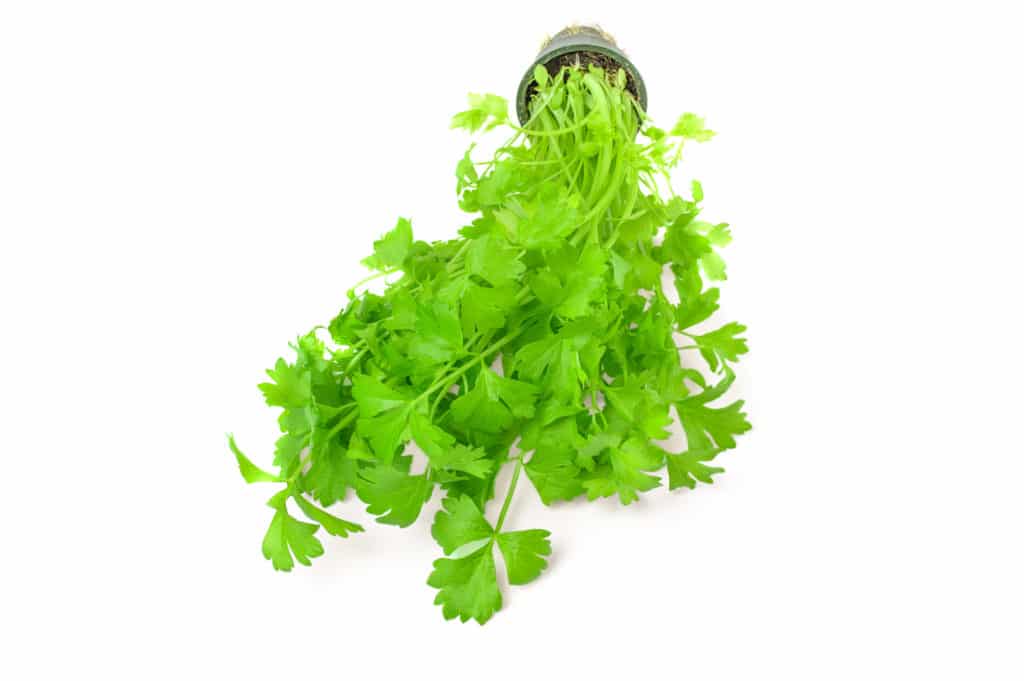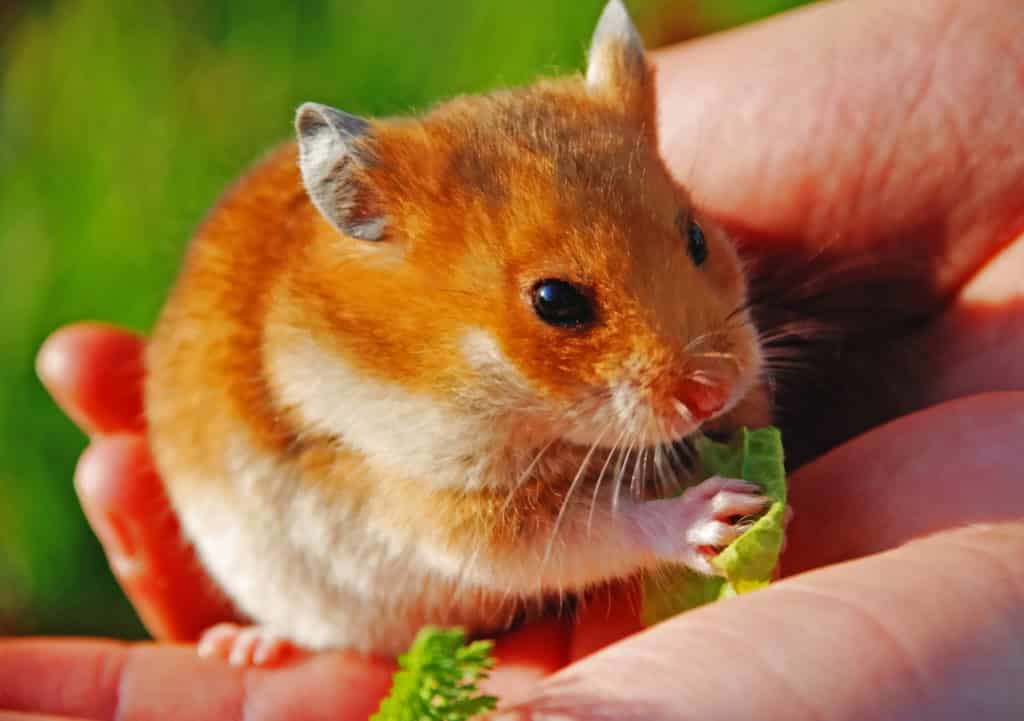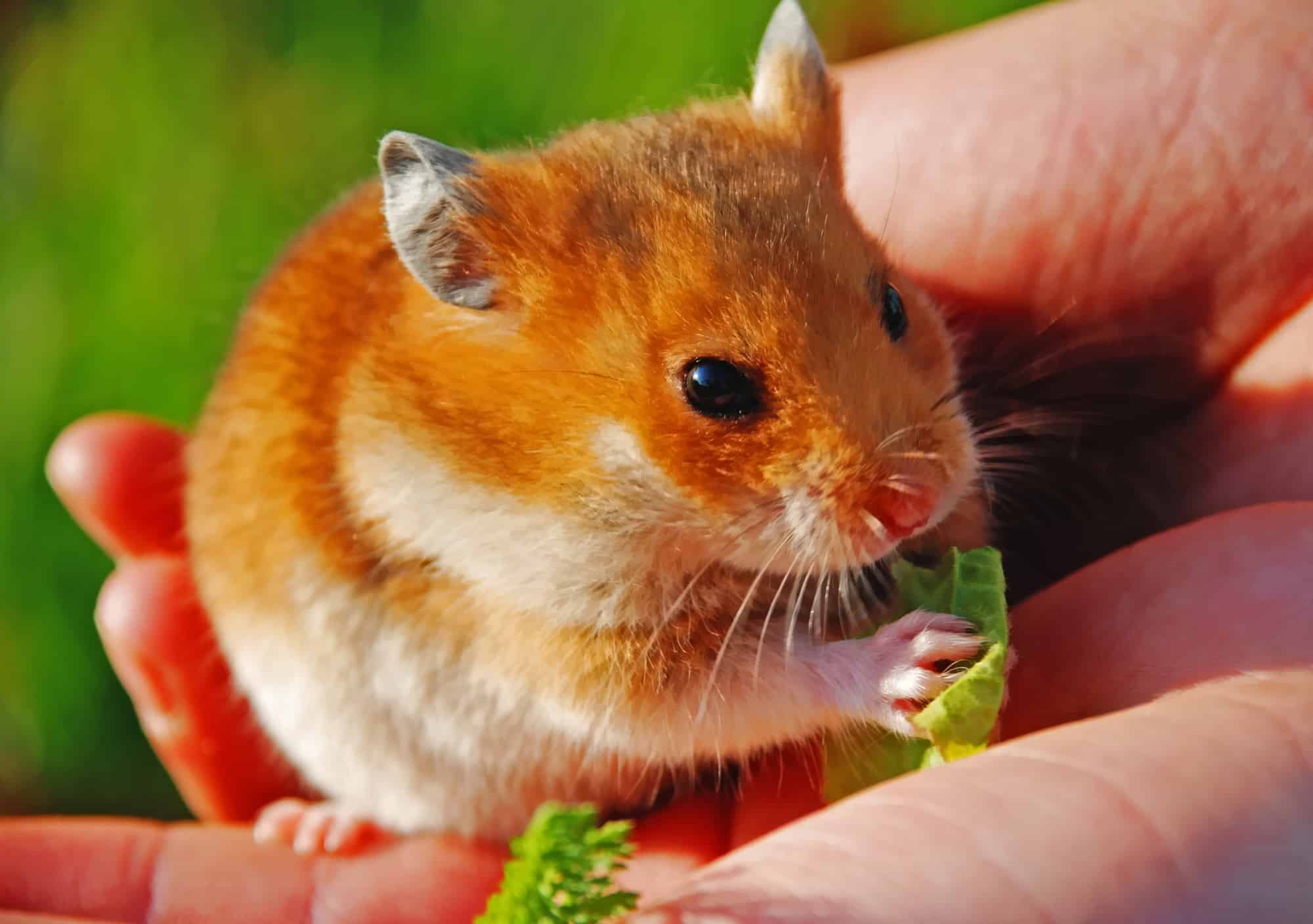Cilantro, also known as coriander, has been used in various cuisines across the world for several centuries. It not only improves the aroma and taste of the dish but is also highly beneficial for our health.
So, given the advantages of cilantro, some pet owners would want to share it with their pets. If you own a hamster, you might have been tempted to do the same thing too. But do you know if cilantro is safe for hamsters? Can hamsters eat cilantro? If so, what are the health benefits? What are the risks involved with feeding cilantro to hamsters? What should you watch out for? Find out the answers to all these questions in this blog post.
Cilantro
Before we find out if hamsters can eat cilantro, let’s first look at cilantro and where it came from.
Cilantro is an herb from the leaves of Coriandrum sativum (the coriander plant). This plant belongs to the parsley family. So, it is not surprising that cilantro is also known as Chinese parsley or Mexican parsley (Source: The Spruce eats).
In the UK and European countries, the leaves, stalk, and seeds of the Coriandrum sativum plant are all called coriander. In the USA, however, the leaves and stems of the plant are not called coriander but cilantro. It is not surprising, considering the Spanish translation of coriander is cilantro. So, the USA adopted this term from its use in Mexican cooking (Source: Food and Wine). But the seeds continue to be called coriander in the USA.
In India, the leaves and stalk are called dhania, whereas the seeds are called coriander.
Origin
The plant Coriandrum sativum is native to the Mediterranean and Middle-eastern regions. Coriander seeds have been found in ruins dating back to 5,000 BC (Source: The Spruce eats). It was first sown to be used as a spice, probably in the Anatolian region of present-day Turkey (Source: The University of IOWA). From there, it might have spread to Egypt, where its use as a medicinal plant has been inscribed in an Egyptian Papyrus dating back to somewhere between 2500 and 1550 BC. From Egypt, it might have spread into Europe through the Romans. Now, it has become a major ingredient in many cuisines across the world.
Nutritional content in cilantro
The nutritional content in 100g of cilantro is listed below:

(Source: Fatsecret)
Can hamsters have cilantro? Is cilantro safe for hamsters?
For millennia, cilantro has been used for its medicinal effects. It is not just a spice that’s added to the food for its taste and aroma; it also offers many health benefits.
Health benefits of cilantro
1. Due to factors like contaminated water, food, and the air you breathe, toxic metals like aluminum, arsenic, cadmium, lead, and mercury can enter your body. The same can happen to your hamster, too. Once they enter the body, they can accumulate in glands that secrete hormones, muscular tissues, or inside bones. This leads to serious health problems, including hormone imbalance, impaired organ function, etc. (Source: Global healing). Cilantro protects you and your hamster from these dangerous metals. Chemicals in cilantro bind to these toxic metals and loosen them from the bodily tissues to which they are stuck. Once loosened, these toxic metals can be removed from the body naturally.
2. It is normal for gas to be formed in the gastrointestinal tract and be released through the mouth and anus. But if it gets trapped there, it causes problems like bloating and abdominal pain. If too much gas gets trapped, or if there is an underlying condition like Lactose Intolerance, it could lead to diarrhea, weight loss, etc. At times, excessive trapped gas could even affect the brain, causing brain fog, a condition in which confusion, forgetfulness, lack of focus and mental clarity, etc., occur (Source: Dr.Ruscio). Carminatives are substances that combat these problems by either preventing the formation of gas in the gastrointestinal tract or helping in the expulsion of the formed gas (Source: Wikipedia). Carminatives coordinate and regulate gut contractions so that the digestive system works properly with ease (Source: The naturopathic herbalist). They soothe the gut wall, which eases gripping pains and helps remove the gas from the digestive tract. Cilantro and the extract from coriander seeds are excellent carminatives (Source: PubMed).
3. Cilantro and oils extracted from coriander seeds are also good for the digestive system in general. They stimulate the release of digestive enzymes, and hence, make digestion more efficient. As a result, your hamster’s body can better assimilate the nutrients in the consumed foods.
4. Cilantro shows excellent antimicrobial activity, i.e., it fights against harmful microbes like bad bacteria and fungi. Fresh cilantro leaves contain a compound called Dodecenal. This compound fights against bacteria like Salmonella choleraesuis, which causes life-threatening food poisoning (Source: PubMed). Cilantro also inhibits the growth of other harmful microbes like Staphylococcus aureus, which causes skin infections and pneumonia; E Coli, which causes urinary tract infections, diarrhea, and pneumonia; Vibrio cholerae, which causes Cholera; and yersinia enterocolitica, which causes Yersiniosis (Source: ResearchGate). Thus, cilantro protects your hamster from food poisoning, diarrhea, pneumonia, Cholera, and urinary tract infections.
5. Free radicals are harmful substances that are produced in your hamster’s body. They are highly unstable molecules that need electrons to become stable. They can steal this electron from the body cell, membranes, or even the DNA. Thus, they cause irreparable damage to your hamster’s body. They can even cause cancer. Antioxidants are substances that protect your hamster from such harmful substances. They provide electrons to free radicals and neutralize them before they damage the body. Cilantro leaves and coriander seeds contain life-saving antioxidants like quercetin, apigenin, kaempferol, and rhamnetin. Quercetin reduces inflammation, blood pressure, and the risk of cancer while boosting the immune system and maximizing exercise performance (Source: Healthline). Apigenin reduces anxiety and depression and, in high doses, induces sleep (Source: Examine). Kaempferol has been shown to be very effective in identifying cancerous cells, regardless of their location, and destroying them (Source: US National Library of Medicine). Rhamnetin possesses anti-tumor properties since it has been shown to suppress the growth of tumor cells in the livers of tumor-bearing mice (Source: Medical Science and Discovery).
6. Cilantro contains sufficient amounts of vitamins A, C, and K. Vitamin A plays an important role in improving vision and immunity. Vitamin C is a vitamin needed by the body for a multitude of functions, like helping the tissues grow, develop and repair themselves; absorbing iron; maintaining bones, teeth, and cartilage; etc. Vitamin K plays an important role in blood clotting so that your hamster doesn’t bleed too much if he gets hurt.
7. Cilantro contains important minerals like calcium, iron, potassium, manganese, and magnesium (Source: Cuban Cardio). Your hamster needs to eat these minerals because they help in muscle contraction and functioning of nerves; strengthening bones and teeth; moving nutrients into cells and waste products out of cells; reducing blood pressure to healthy levels; producing red blood cells; regulating metabolism; producing energy; etc.
8. Cilantro leaves constitute 92.2% water. So, they keep your hamster hydrated throughout the day.

9. 100g of cilantro leaves contain 2.8g of fiber. The water content and fiber content work together to make your hamster’s stool smoother. Thus, cilantro can prevent constipation.
10. Various studies done on rats indicate that coriander seed extract can lower blood sugar when fed along with a high-fat cholesterol diet (Source: Sciencedirect). The same extract was also found effective in reducing elevated levels of insulin in diabetic rats(Source: PubMed).
11. Kidneys filter the blood, and remove the toxins, and flush them out of the body in the form of urine. Thus, they protect other internal organs from being damaged by these toxins. Cilantro leaves are diuretic in nature. They stimulate the kidneys to excrete more sodium into the urine (Source: Wellness Munch). Thus, they help lower blood pressure and protect the body from toxin overload.
Risks
1. Cilantro is acidic in nature. So, make sure not to feed too many cilantro leaves to your hamster or feed other acidic food items the same day as cilantro, as that might cause gas, stomach pain, vomiting, abdominal cramps, or diarrhea.
2. Cilantro contains high amounts of dietary fiber. So, if your hamster eats too much cilantro, his stomach might get upset.
3. Since hamsters are small creatures, their digestive systems are extremely sensitive. So, there is a very small chance that your hamster could develop an allergy to cilantro. Therefore, watch out for any allergic symptoms like itching or diarrhea after feeding cilantro for the first time.
4. Cilantro is rich in calcium. So, overfeeding it to your hamster might cause kidney stones.
Also read: Can hamsters eat spinach?
Different breeds of hamsters vs. cilantro
We already know that cilantro is safe for your furry friends to eat, but only in moderate amounts. In this section, let’s find out how much cilantro each type of hamster can eat.
Can Chinese dwarf hamsters eat cilantro?
Yes, they can eat cilantro. But not too much. They are one of the smallest breeds of hamsters. So, they can eat only a small quantity of food every day. 90% of it should be hamster food like hamster pellets or mixed food. Only 10% of their daily diet can contain treats like fruits and vegetables (Source: Hamsters101). So, Chinese hamsters should not overeat cilantro. About a tiny piece of cilantro once a month should suffice. And remember that this piece shouldn’t be more than 10% of a hamster’s daily diet.
Can Campbell dwarf hamsters eat cilantro?
Yes, but like Chinese hamsters, Campbell hamsters are small hamsters too. So, they can only eat a small piece of cilantro once a month.
Can Russian dwarf hamsters eat cilantro?
Yes, Winter White hamsters (also known as Russian dwarf hamsters) can eat cilantro. But not more than a small piece a month.
Can Roborovski hamsters eat cilantro?
Yes, Roborovski hamsters can eat cilantro. They may be smaller when compared to other dwarf hamsters. But they are also more active when compared to other dwarf hamsters. So, their bodies need more food. Hence, they can eat more food than other dwarf hamsters. Therefore, they can eat a small piece of cilantro once every fortnight.
Can Syrian hamsters eat cilantro?
Yes, they can. And as the biggest breed of hamsters, they can eat more cilantro compared to other breeds of hamsters – about a small piece of cilantro once every week.
FAQ
Can hamsters eat cilantro stems?
Yes, hamsters can eat cilantro stems. They are edible and might even offer the same benefits as cilantro leaves. But even if the stems are healthy, they might taste a little bitter, and your hamster may not like them at all. And even if your hamster likes them, you should only feed cilantro stems in moderation.
Can hamsters eat cilantro flowers?
Yes, hamsters can eat cilantro flowers. But they may not be as nutritious as cilantro leaves. So, it may not benefit your hamster as much.
Can hamsters eat cilantro roots?
Cilantro roots may not offer any health benefits as the leaves. Moreover, they might pose a choking hazard to your hamster. So, it is best to avoid them (Source: Tiny pet tales).
Can hamsters eat cilantro (coriander) seeds?
Coriander seeds may not contain as much water or vitamins as cilantro leaves. But they contain high amounts of minerals. But having said that, there isn’t sufficient research on the health effects of coriander seeds for hamsters. So, it is better not to give any coriander seeds to your hamster.
Other things to watch out for
If possible, buy organic cilantro for your hamster. They may not contain any pesticides sprayed on them. If that is not possible, wash the cilantro under running cold water for 15 – 20 seconds to eliminate any traces of pesticides.
If your hamster eats rotten food items, his stomach can get upset and cause diarrhea. So, if your hamster doesn’t finish eating the cilantro you give him within 24 hours, remove the uneaten pieces.
After feeding cilantro for the first time, watch out for any changes in your hamster’s behavior, like the color and consistency of his stool. If you notice any changes, consult a vet immediately.
Summary – Key Takeaways
Cilantro has been used by humans for almost 7,000 years for its medicinal benefits. Some of these benefits are listed below:
- Cilantro helps remove toxic metals from the body.
- They are good for the digestive system and help the body absorb the nutrients in the food more efficiently.
- They possess excellent antibacterial and antifungal properties. So, they protect the body from food poisoning, diarrhea, cholera, and urinary tract infections.
- They contain antioxidants that reduce inflammation, fight cancer, reduce tumors, and boost the immune system.
- Cilantro contain vitamin A, vitamin C, and vitamin K.
- They contain essential minerals like calcium, potassium, iron, manganese, and magnesium, which are indispensable for various functions in the body.
- Since they contain a lot of water and dietary fiber, they prevent constipation.
- They help the kidney remove sodium from the body through urine.
How to give cilantro to hamsters?
- Buy organic cilantro.
- Wash cilantro under running water for 10-15 seconds to remove any traces of pesticides.
- Give only cilantro leaves or stems to your hamster. Avoid the roots and the seeds.
- Cut the leaves into small pieces to avoid choking. Mix it with other non-acidic food items like vegetables and fruits so that your hamster can eat a balanced diet and get different nutrients from one meal.
- Watch out for any changes in your hamster’s behavior or the appearance of his stool. If you notice any changes, consult a veterinary doctor immediately.
- If your hamster doesn’t finish eating the cilantro you give him within 24 hours, remove the uneaten pieces.



